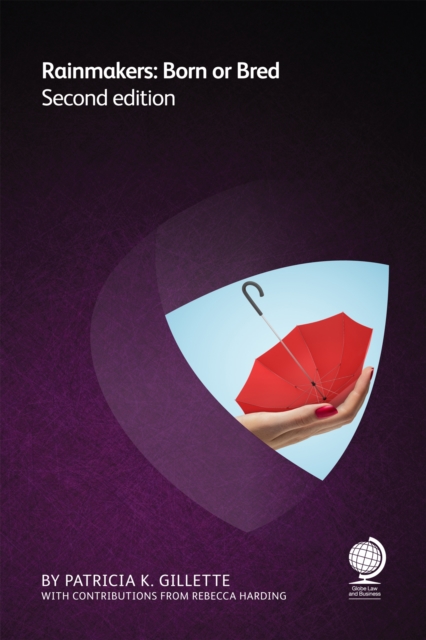
She took the Scarecrow, the Tinsman, and the Cowardly Lion (all of whom I believe were men), identified what they needed, and then led them down the yellow brick road to Oz. And when they arrived there, she made sure each of these men got what they came for; the Scarecrow got his brain, the Tinsman got his heart, and the Cowardly Lion got his courage. That is exactly what a leader does. She sets goals, devises a strategy to achieve those goals, and then delivers results.
So why don’t we think of Dorothy as a leader? She certainly exhibits the skills we associate with leadership: confidence, collaboration, risk taking, as well as innovative and creative thinking. And yet, it is not until these things are pointed out to us that we are able to think of her as more than just a girl from Kansas who went to Oz. Why is that?
The easy answer is that it is a movie and no one, not even the most ardent feminist, is thinking about anything other than Dorothy getting back to Kansas. But even if that is true, the underlying truth is that Dorothy just doesn’t fit our concept of what a leader looks like and, this provides a context for discussing the dilemma that women have been facing in the legal industry for years: we don’t fit the traditional image of a law firm leaders.
It is no secret that the vast majority of law firm leaders are white men. And, most of the time they are also among the biggest rainmakers in the firm, and thus among the most highly compensated lawyers. Thus, our image of law firm leaders, much like that of corporate America, is anchored in this group of white males who control the firm’s most lucrative clients. Given that image, the question law firms have tacitly been asking for years is the same as that posed by Henry Higgins in My Fair Lady: Why can’t a woman be more like a man?
And, because that is the question, the answer seems obvious: Fix the women. Make them more like men and then, women will rise into positions of leadership and power.
That mindset led to various well-intentioned actions by firms to “help women succeed.” Yet, after decades of these kinds of “fixes” for women, we still have few women in power positions in our firms.
Is that because women just are not capable of being leaders? Or is it there something else that is interfering with the ability of women to rise into positions of power in our firms? Could it be the system – not the women – that needs fixing? In my opinion, the obstacles for women ascending into positions of power are systemic, requiring an overhaul of the way we think about how we practice law and reward attorneys in our firms.
Sources of Power. There are two kinds of power in law firms: institutional and economic and they are inextricably linked. To get institutional power (read: leadership), you must have economic power (read: business). For decades, however, there have only been a few women who have economic power in their firms, and because of the link between institutional and economic power, this explains – in part – the lack of women in leadership positions.
Firms have tried to solve the economic power problem by giving women special training on business development and, in many cases, individual coaches to help them develop books of business. But even though these actions have had little to no impact, firms continue to pour hundreds of thousands of dollars into these programs.
What firms have not done is to examine whether there may be a reason other than some alleged deficiency in women to develop business that is interfering with the desired outcome to increase economic power. For example, firms rarely take a deep dive into the ways in which business opportunities are delved out: who goes on pitches, who is assigned to lead counsel roles, who gets high profile case assignments, who is chosen to take over institutional clients. Those kinds of opportunities in most firms are not monitored or systematized. Rather they are left to individual lawyers to dole out as they see fit. And, as a result, women have traditionally received fewer opportunities to develop their profiles, to interact with potential clients, and to demonstrate their ability to take on leadership roles in their legal work. Their exposure to potential clients has been limited not by lack of ability, but by lack of opportunity. The same is true of existing clients. Most firms do not have succession planning for institutional clients. As a result, those lucrative client relationships, which are usually controlled by white men, are passed onto white men.
These systemic issues stand in the way of women getting economic power. And no amount of training or coaching is going to change that. Instead, firms need to examine their systems and insert controls into those systems that will level the playing field and provide the same kinds of opportunities to women lawyers as has traditionally been provided to their male colleagues.
The Economic Power Fix. How do we solve for that? We do what many of our clients as well as some law firms are doing. We take intentional actions to diversify the sources of economic power so that we can yield a positive impact.
- Succession Planning for Institutional and Large Clients. This means firms act intentionally with respect to passing on long standing clients of the firms. No longer is there a “tap on the shoulder” process for bringing new attorneys into a client relationship. Rather, there is a conscious effort to ensure that women are given the opportunity to “inherit” these relationships by intentionally introducing them into the mix so that the client gets to know and trust them.
- Monitoring of Pitch Teams. Who goes on a pitch is critically important to building economic power because it gives women the ability to deliver new clients or expand client relationships. Too often pitch teams are composed of “friends” of the person who got the call to pitch rather than a strategic combination of skill sets, personality fits, and diverse attorneys. This is of course changing as clients are demanding diverse teams. Firms that voluntarily get ahead of this demand by affirmatively making pitch teams diverse may have a leg up on the competition and increases the economic power of women attorneys.
- Lead assignments for Women. No one should ever put an unqualified person in charge of a case, as the lead counsel in a litigation or corporate matter, or as the spokesperson for a client in court or in a deal setting. But, it clearly there more women than are currently in these roles who are qualified to serve – they just haven’t been chosen. Making a targeted effort to ensure that women are getting these types of opportunities raises their profiles and is essential to their ability to build a book of business.
- Rethinking Origination Credit. Some would say origination credit is the root of all evil in our industry. It makes us think about ourselves instead of the institution, it creates silos, it inspires bad behavior, and it negatively impacts the ability of women to get economic power – particularly in those systems where origination credit is assigned for life, regardless of who actually does the work. Origination credit systems have especially plagued women for years – in part because while women have been instrumental in the success of matters, women are often not the originating partner (see above) and thus, they get no credit. This system needs to be changed and rethought. But until that happens, firms need to have systems in place to ensure that people who are critical to the relationships and/or who are actually doing the work and keeping the relationship going are getting credit for their contributions – even if they didn’t bring the client into the firm.
These are just some of the actions firms could take to increase the economic power of women. And if that economic power base is expanded to include more women, the opportunities for institutional power – e.g. leadership positions – should increase as well.
The Opportunity Fix. But there is another lever that firms should consider to ensure women are being considered for power positions in their firms: implementation of the Mansfield Rule. This Rule, that was designed by the team I co-chaired at the Diversity Lab’s 2016 Hackathon, has been refined and enhanced by The Diversity Lab and adopted by over 60 law firms across the country. The premise is simple: ensure that women (and minorities) are in the candidate pool for the important leadership roles in the firm. The Rule requires that for each significant leadership position in the firm, 30% of the candidates in the pool must be women or minorities. Note, the Rule doesn’t require that the women or minorities be chosen. It simply requires that they be included the pool.
And what does that do? It raises the visibility of these attorneys; it requires transparency into the qualifications for these positions and the process; and it requires that law firms increase the pipeline of women and minorities so that they can fill the 30% requirement. It is for that reason that The Mansfield Rule is an action that has immediate impact and hopefully will begin to change the face of power in our firms.
But the Mansfield Rule can easily become a “check the box” action unless we also address the implicit biases that infiltrate the decisions about who will be chosen from the candidate pools it creates.
Implicit biases are based on stereotypes. They are the stories we tell ourselves about people before we have met them. All of us have these biases. And there is no question that implicit bias can interfere with how we perceive the people with whom we interact.
Take Dorothy. Her pig tails, her high-pitched voice, the gingham dress and her youth are not characteristics that we associate with a leader and, as a result, they get in the way of our ability to see Dorothy for the leader she is and what she accomplished.
Implicit biases cannot be “trained” away. Nor can we eliminate them completely. But we can raise consciousness about these biases so that we are able to check the behavior of ourselves and others. The way to do that is twofold.
First, firms can use appropriate training to bring the issue of implicit bias to the forefront. The type of training is critical. For lawyers, shame and blame doesn’t work. Nor do “touchy feely” presentations. What does work is training that puts implicit bias into context, that talks about the science and law behind the concept, that is interactive, scenario based so that people are encouraged to share their thoughts, their skepticism and their experiences. The messages are simple:
- We all have biases.
- We can’t eliminate those biases overnight and, in some cases never.
- We have laws and science that back up the concept of implicit bias.
- We can learn to recognize implicit bias when we see it in others and check them appropriately.
We can learn to recognize implicit bias in ourselves and to step back and reconsider.
Second, firms must look for pockets of implicit bias in areas such as compensation, promotion to equity partner, assignments, and firm leadership. This requires an honest and transparent examination of the criteria, for example, of setting compensation or for moving from a non-equity to equity partner position. Once that criteria are determined to be valid and reflective of what the firm values, then there must be an examination of whether the standards are being applied equally, and a commitment to making changes if the standards are not equal.
Only if these implicit biases that we know interfere with our decision making are addressed can a solution like the Mansfield Rule actually work. Because until we change our image of what a leader looks like, it won’t matter how many women are in the candidate pool, they won’t be chosen as firm leaders.
The Self Fix. It would be disingenuous to ignore the fact that women must also step up to the plate if we are going to move more women into leadership positions. And, for many women, that means they have to learn to self-promote, take risks, abandon the “perfect” standard for everything they do, and ask for opportunities that will lead to leadership positions. Call it a growth mindset or grit or resilience. Women have to be willing to put themselves on the line, to show confidence, ambition and strength. It doesn’t mean we have to become men. But it does mean that we have to assert ourselves and insert ourselves into positions and opportunities to demonstrate a desire for power and an ability to exercise it.
Of course, there are gender norms that may be “violated” by such actions. Some women will maneuver around those; others will take them on. Each woman must determine for herself how to deal with this issue. But ignoring this reality is not an option.
And we have to bring men on as allies. Baby boomer men, especially those with daughters, can be champions for women because they have the power and the clout to work for the kinds of changes suggested here. Millennial men are taking on some of the same causes that women have advanced for years and that gives more momentum and power to move the dial. Women need to reach out to these men; to seek their input and assistance; and to make these issues of diversifying leadership “firm” issues not “women’s issues”.
Dorothy didn’t need a man to give her power. She had it all along. She simply needed to figure out where it was and how to use it. For her that power was in the ruby red slippers.
If we want more women leaders, we have to find our equivalent of the ruby slippers and insist upon changes to the law firm structures and systems that are holding us back. Because what the fashion magazines have been telling us for years is true. Power is really all about the shoes. If we want more women leaders, we have to find our equivalent of the ruby slippers and insist upon changes to the law firm structures and systems that are holding us back. Because what the fashion magazines have been telling us for years is true. Power is really all about the shoes.
by Patrica Gillette

